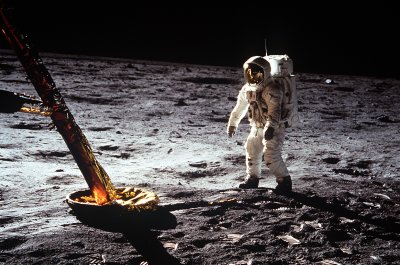Topic: Natalie Wood
Natalie Wood (born Natalia Nikolaevna Zakharenko (Russian: Наталья Николаевна Захаренко); July 20, 1938 – November 29, 1981) was an American actress. Wood began acting in movies at the age of four and became a successful child actor in such films as Miracle on 34th Street (1947). A well received performance opposite James Dean in Rebel Without a Cause (1955) earned her a nomination for the Academy Award for Best Supporting Actress and helped her to make the transition from a child performer. She then starred in the musicals West Side Story (1961) and Gypsy (1962). She also received Academy Award nominations for her performances in Splendor in the Grass (1961) and Love with the Proper Stranger (1963). Her career continued successfully with films such as Bob & Carol & Ted & Alice (1969). After this she took a break from acting and had two children, appearing in only two theatrical films during the 1970s. She was married to actor Robert Wagner twice, and to producer Richard Gregson. She had one daughter by each: Natasha Gregson and Courtney Wagner. Her younger sister, Lana Wood, is also an actress. Wood starred in several television productions, including a remake of the film From Here to Eternity (1979) for which she won a Golden Globe Award. Wood drowned near Santa Catalina Island, California at age 43. She had not yet completed her final film, the science fiction drama Brainstorm (1983) with Christopher Walken, which was released posthumously. Wood was born Natalia Nikolaevna Zakharenko in San Francisco, to Russian immigrant parents Maria Stepanova (née Zudilova) and Nikolai Zacharenko. Her father was born in Vladivostok and the family fled Russia during the Revolution. He was sent to live with relatives in Canada, but later moved to San Francisco, where he worked as a day laborer and carpenter. Natalie's mother originally came from Siberia, but grew up in the Chinese city of Harbin. She described her family by weaving mysterious tales of being either gypsies or landowning aristocrats. In her youth her mother dreamed of becoming an actress or ballet dancer. Biographer Warren Harris writes that under the family's "needy circumstances," her mother may have transferred those ambitions to her middle daughter, Natalie. Her mother would take Natalie to the movies as often as she could: "Natasha's only professional training was watching Hollywood child stars from her mother's lap," notes Harris. Natalie Wood would later recall this early period: My mother used to tell me that the cameraman who pointed his lens out at the audience at the end of the Paramount newsreel was taking my picture. I'd pose and smile like he was going to make me famous or something. I believed everything my mother told me. Shortly after her birth in San Francisco, her family moved to nearby Sonoma County, and lived in Santa Rosa, California, where Wood was noticed during a film shoot in downtown Santa Rosa. Her mother soon moved the family to Los Angeles and pursued a career for her daughter. Wood had one younger sister, Svetlana Zacharenko (better known as Lana Wood), who also became an actress and later, notably, a Bond girl. She and Lana have an older half sister, Olga Viriapaeff. Though Natalie had been born "Natalia Zacharenko," her father later changed the family name to "Gurdin" and Natalie was often known as "Natasha," the diminutive of Natalia. Hollywood would later change her name to "Natalie Wood," a name she really never cared for. Wood made her film debut a few weeks before turning five, in a fifteen-second scene in the film Happy Land (1943). Despite the brief part, she attracted the notice of the director, Irving Pichel, who remained in touch with her family for two years until another role came up. The director phoned Natasha's mother and asked her to bring Natasha down to Los Angeles for a screen test. Her mother became so excited at the possibilities, she overreacted and "packed the whole family off to Los Angeles to live," writes Harris. Her husband opposed the whole idea, but his wife's "overpowering ambition to make Natasha a star" took priority. Wood, then seven years old, got the part and played a German orphan opposite Orson Welles and Claudette Colbert in Tomorrow Is Forever. Welles later said that Wood was a born professional, "so good, she was terrifying". After doing another film directed by Pichel, her mother signed her to a role with 20th Century Fox studio for her first major role, the Christmas classic Miracle on 34th Street (1947), which made her one of the top child stars in Hollywood. Within a few months after the film's release she was so popular that Macy's invited her to appear in the store's annual Thanksgiving Day parade. She would eventually appear in over 20 films as a child, appearing opposite such stars as Gene Tierney, James Stewart, Maureen O'Hara, Bette Davis and Bing Crosby. As a child actor, her formal education took place on the studio lots wherever she was acting. California law required that until age 18, actors had to spend at least three hours per day in the classroom, notes Harris. "She was a straight A student," and one of the few child actors to excel at arithmetic. Director Joseph L. Mankiewicz, who directed her in The Ghost and Mrs. Muir (1947), said that "In all my years in the business, I never met a smarter moppet." Wood remembers that period in her life: I always felt guilty when I knew the crew was sitting around waiting for me to finish my three hours. As soon as the teacher let us go, I ran to the set as fast as I could. Wood successfully made the transition from child star to ingenue at age 16 when she co-starred with James Dean and Sal Mineo in Rebel Without a Cause, Nicholas Ray's film about teenage rebellion. She was nominated for an Academy Award for Best Supporting Actress. She followed this with a small but crucial role in John Ford's western The Searchers which starred John Wayne and also featured Wood's sister, Lana, who played a younger version of her character in the film's earlier scenes. She graduated from Van Nuys High School in 1956. Signed to Warner Brothers, Wood was kept busy during the remainder of the decade in many 'girlfriend' roles that she found unsatisfying. The studio cast her in two films opposite Tab Hunter, hoping to turn the duo into a box office draw that never materialized. Among the other films made at this time were 1958's Kings Go Forth and Marjorie Morningstar. As Marjorie Morningstar, she played the role of a young Jewish girl in New York City, who has to deal with the social and religious expectations of her family, as she tries to forge her own path and separate identity. After appearing in the box office flop All the Fine Young Cannibals, Wood's career was salvaged by her casting in director Elia Kazan's Splendor in the Grass (1961) opposite Warren Beatty, which earned Wood Best Actress Nominations at the Academy Awards, Golden Globes and BAFTA Awards. Also in 1961 Wood played Maria in the Jerome Robbins and Robert Wise musical West Side Story which was a major box office and critical success, however, the singing parts were sung by Marni Nixon. Wood did sing when she starred in the 1962 film, Gypsy. She co-starred in the slapstick comedy The Great Race (1965), with Jack Lemmon, Tony Curtis, and Peter Falk. Wood then received her third Academy Award nomination and another Golden Globe award in 1964 for Love with the Proper Stranger, opposite Steve McQueen. Although many of Wood's films were commercially profitable, her acting was criticized at times. In 1966 she won the Harvard Lampoon Worst Actress of the Year Award. She was the first performer in the award's history to accept it in person and the Harvard Crimson wrote she was "quite a good sport." Conversely, director Sydney Pollack said "When she was right for the part, there was no one better. She was a damn good actress." Other notable films she starred in were Inside Daisy Clover (1965) and This Property Is Condemned (1966), both of which co-starred Robert Redford and brought subsequent Golden Globe nominations for Best Actress. In both films, which were set during the Great Depression, Wood played small-town teens with big dreams. After the release of the films, Wood suffered an emotional breakdown and sought professional therapy. During this time, she turned down the Faye Dunaway role in Bonnie and Clyde because she didn't want to be separated from her analyst. After three years away from acting, Wood played a swinger in Bob & Carol & Ted & Alice (1969), a comedy about sexual liberation. The film was one of the top ten box office hits of the year, and Wood received ten percent of the film's profits. After becoming pregnant with her first child, Natasha Gregson, in 1970, she went into semi-retirement and only acted in four more theatrical films during the remainder of her life. She appeared as herself in The Candidate (1972), reuniting her for a third time with Robert Redford. She also reunited on the screen with Robert Wagner in The Affair (1973), a television adaptation of Cat on a Hot Tin Roof (1976) and made cameo appearances on his shows Switch in 1978 as "Bubble Bath Girl" and Hart to Hart in 1979 as "Movie Star". During the last two years of her life, Wood began to work more frequently as her daughters reached school age.
It uses material from the Wikipedia article "Natalie Wood."













